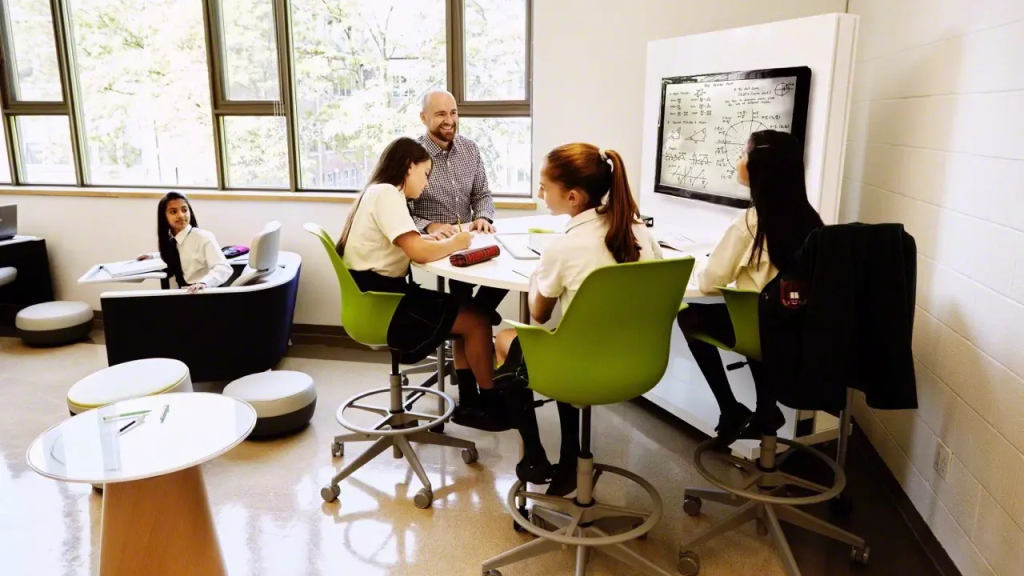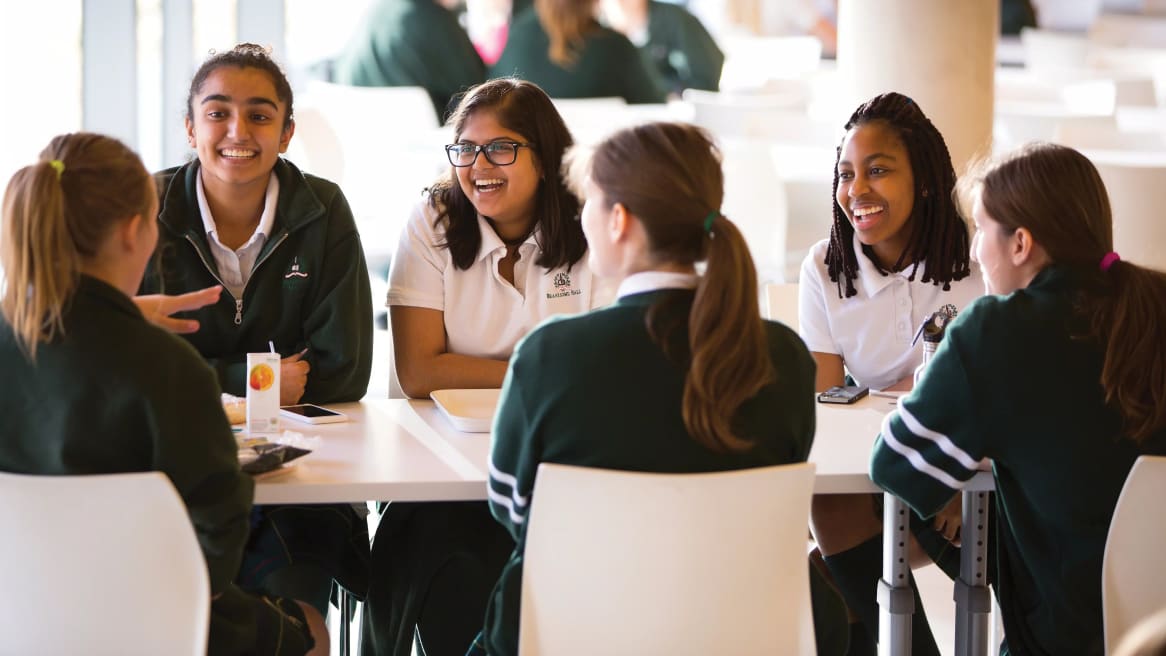Engaging All Students
Creating a sense of belonging through technology and classroom design
After a long history of a one-size-fits-all approach that too often prioritized content over learners, a strong movement is now underway to make education more human-centered and focused on wellbeing, a critical factor for student success.
Steelcase research identified six key dimensions to a healthy, engaged and productive learning environment. Among these, belonging may be the single most important aspect of wellbeing for students.

A robust sense of belonging links to higher achievement, fewer absences and a far greater likelihood of graduating. Moreover, students who experience belonging at school are more likely to feel engaged, valued and motivated to learn.
Achieving such positive outcomes requires different kinds of opportunities for all kinds of students — opportunities that make each individual feel learning is relevant to who they are, their abilities and the world they live in. To help educators cultivate a sense of belonging in students, it’s becoming clear that space and technology working in tandem are impactful tools to leverage.
“Educators today are actively thinking about how they can intentionally and thoughtfully bring students together — whether in physical space, virtual space or both — to create an environment of inclusion so everyone feels they have a seat at the table,” reports Aileen Strickland McGee, Steelcase senior designer researcher. “It’s a continuing story of getting students more involved in their learning.”
Branksome Hall + Parlay + Steelcase Collaboration
Centered on building leaders and globally-minded citizens, Branksome Hall in Toronto is one of the few K-12 schools in the world with a research institute: the Chandaria Research Centre. The institute is dedicated to initiating new research and exploring educational excellence in girls’ learning, wellbeing and international mindedness. Partnering with Steelcase Learning and educational technology company Parlay Ideas, the Chandaria Research Centre explored how technology and active learning classroom design might work together to support more inclusive participation in classroom discussions.
About the Research
The goal was to better support student inclusion through the interplay of pedagogy, space and technology. Research involved 37 middle-school students and 1 social studies teacher. The team compared 4 settings: a traditional classroom (with and without Parlay interactive discussion technology) and an active learning classroom (with and without Parlay interactive discussion technology). Conducted during 6 weeks in 2020, data was collected via software analytics, classroom observations, educator interviews, student surveys and focus groups.
View the full research report here.
“An important part of the educational experience at Branksome Hall is how we come together as diverse beings and individuals to bring our own identities into a community,” says Mira Gambhir, the school’s head of Research + Diversity, Equity and Inclusion. “Because we consider wellbeing a lifelong pursuit, we want to ensure our students are well-prepared to be aware of their own individual needs, while also maintaining the wellbeing of the community. That relational connection is something that our school values very deeply.
“We want to ensure our students are well-prepared to be aware of their own individual needs, while also maintaining the wellbeing of the community.”
Mira GambhirHead of Research + Diversity, Equity and Inclusion, Branksome Hall
“This study was important for us,” she continues, “because it allowed us to explore how those relationships develop in deep conversations that require critical thinking in important areas for the 21st century.”

To better understand the interplay and potential impact of the Parlay technology tool and the spatial design of a classroom, the research team investigated four different environments: a traditional classroom with and without Parlay technology as well as a Steelcase active learning classroom, also with and without Parlay.
The study revealed significantly higher student participation rates in the active learning classroom when compared to the traditional classroom. Notably, the active learning classroom better fostered inclusion and participation by:
- Advancing communication and comfort
- Improving sightlines between students and instructors
- Incorporating moveable furniture for easy reconfiguration
- Recognizing the energy contributed by the overall design, amplified by Parlay
At the same time, the results showed that Parlay technology enhanced classroom discussions by providing a sense of security for students who may not have otherwise participated, resulting in more inclusive conversations.
“The research indicates space can be a vehicle for inclusion, and some of those effects were amplified through the use of the interactive, discussions-based tool,” reports Andrew Kim, Steelcase WorkSpace Futures manager.
“These findings are helping to inform how inclusion can be centered in the planning and design process,” concludes Gambhir. “As we see more options in how education is delivered, it’s essential that students’ voices are heard, and that their identities and needs are attended to as participants in the range of communities within a school. Planning for inclusion will increasingly be a priority in school design. It’s more important than ever to be aware of how the combination of environment and technology can influence that goal.”
We’re Here to Help
As you navigate what’s next in education, we’re ready to help you develop teaching and learning spaces that fulfill your needs, goals and aspirations. Whether you are looking for research and insights, planning a project or in need of a quote, our education specialists are here to help you at any stage.


